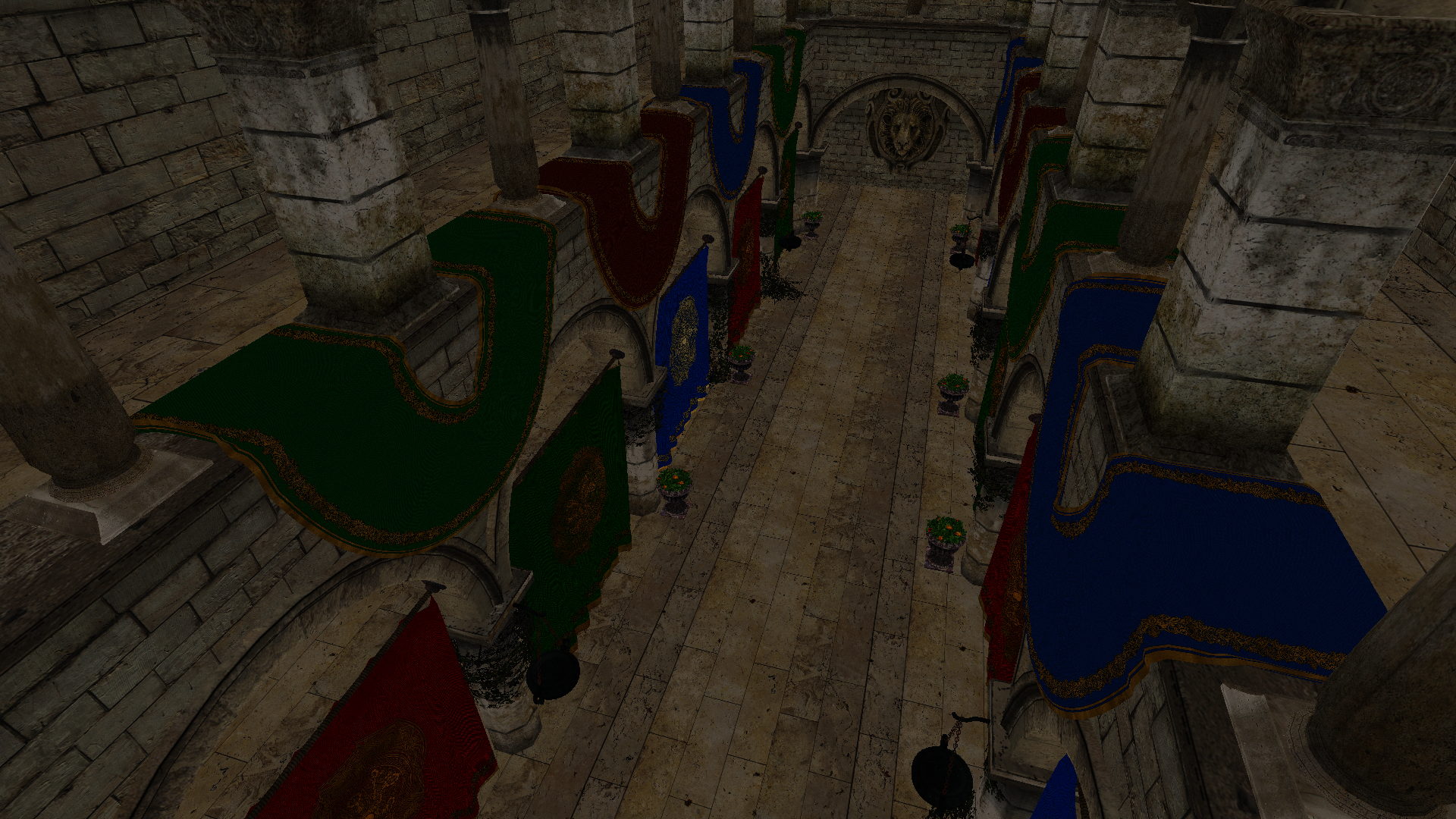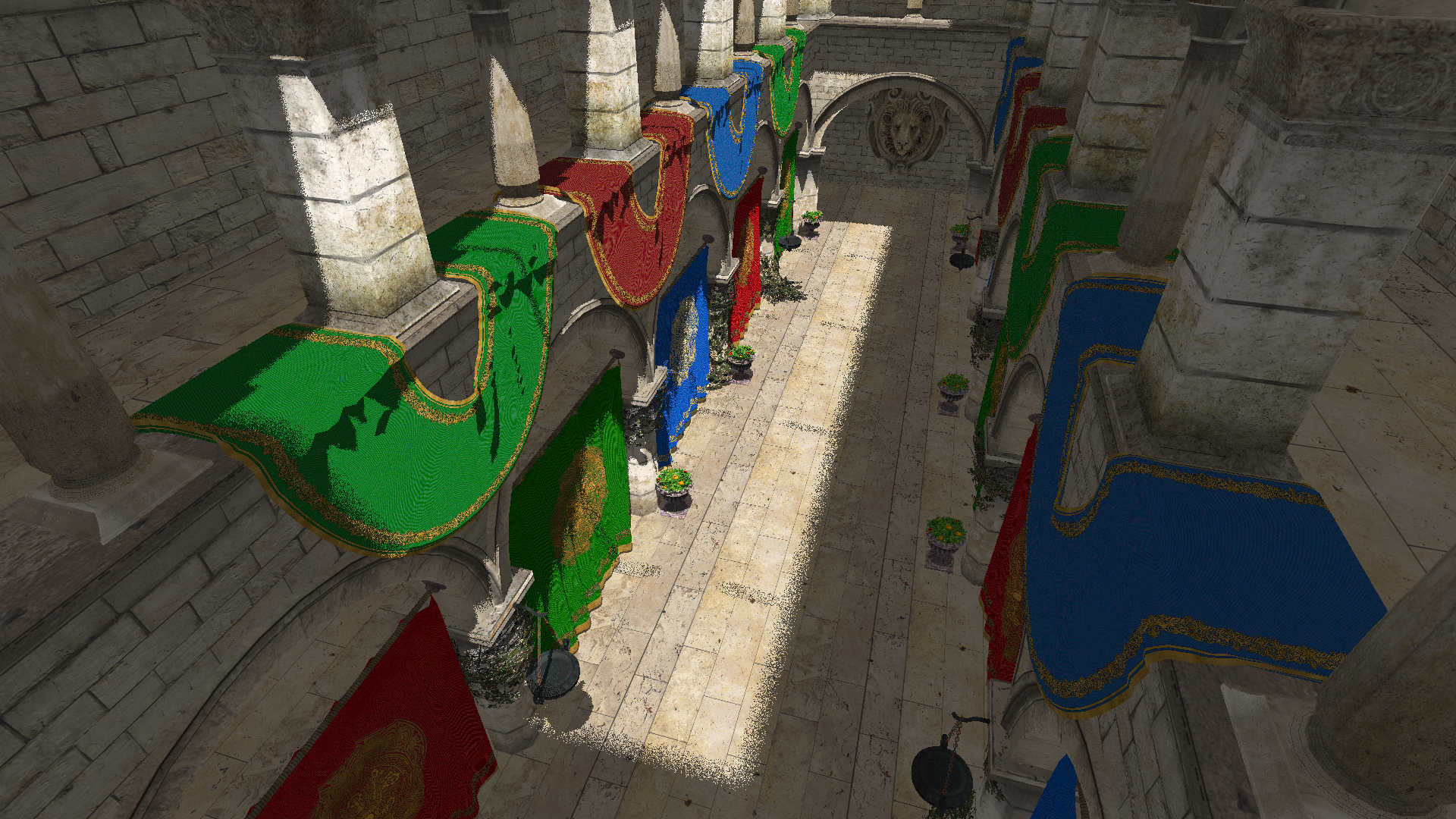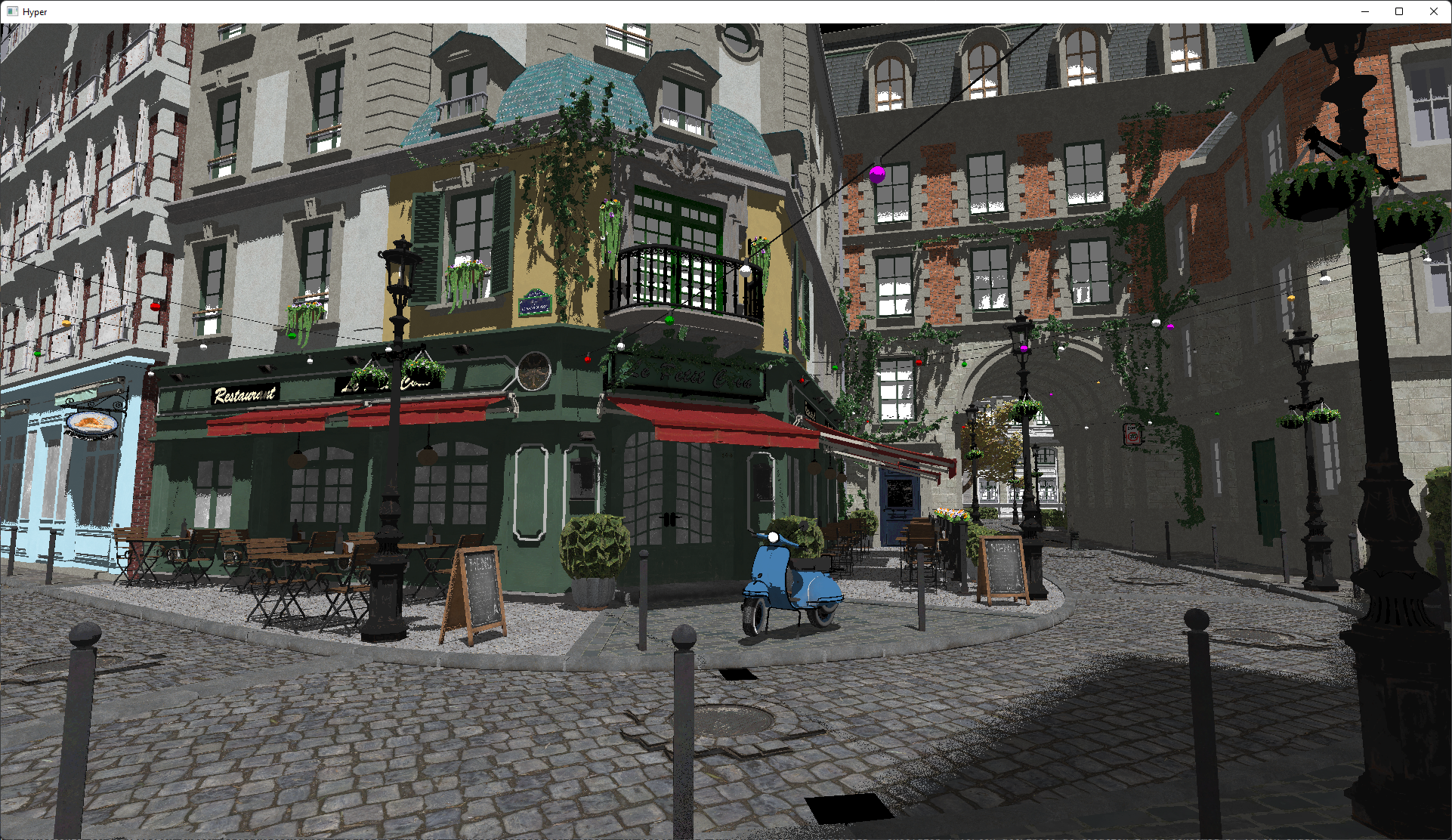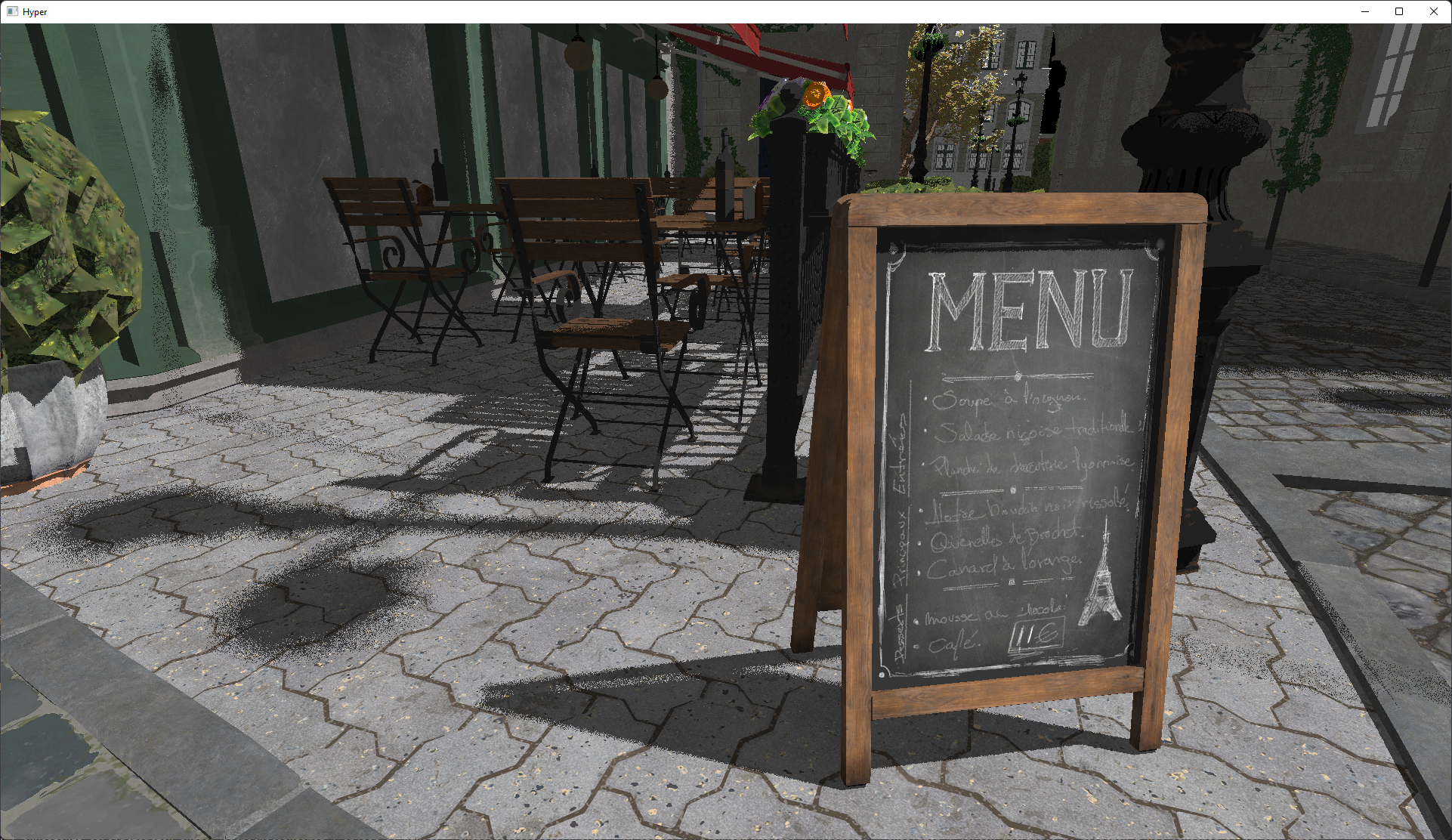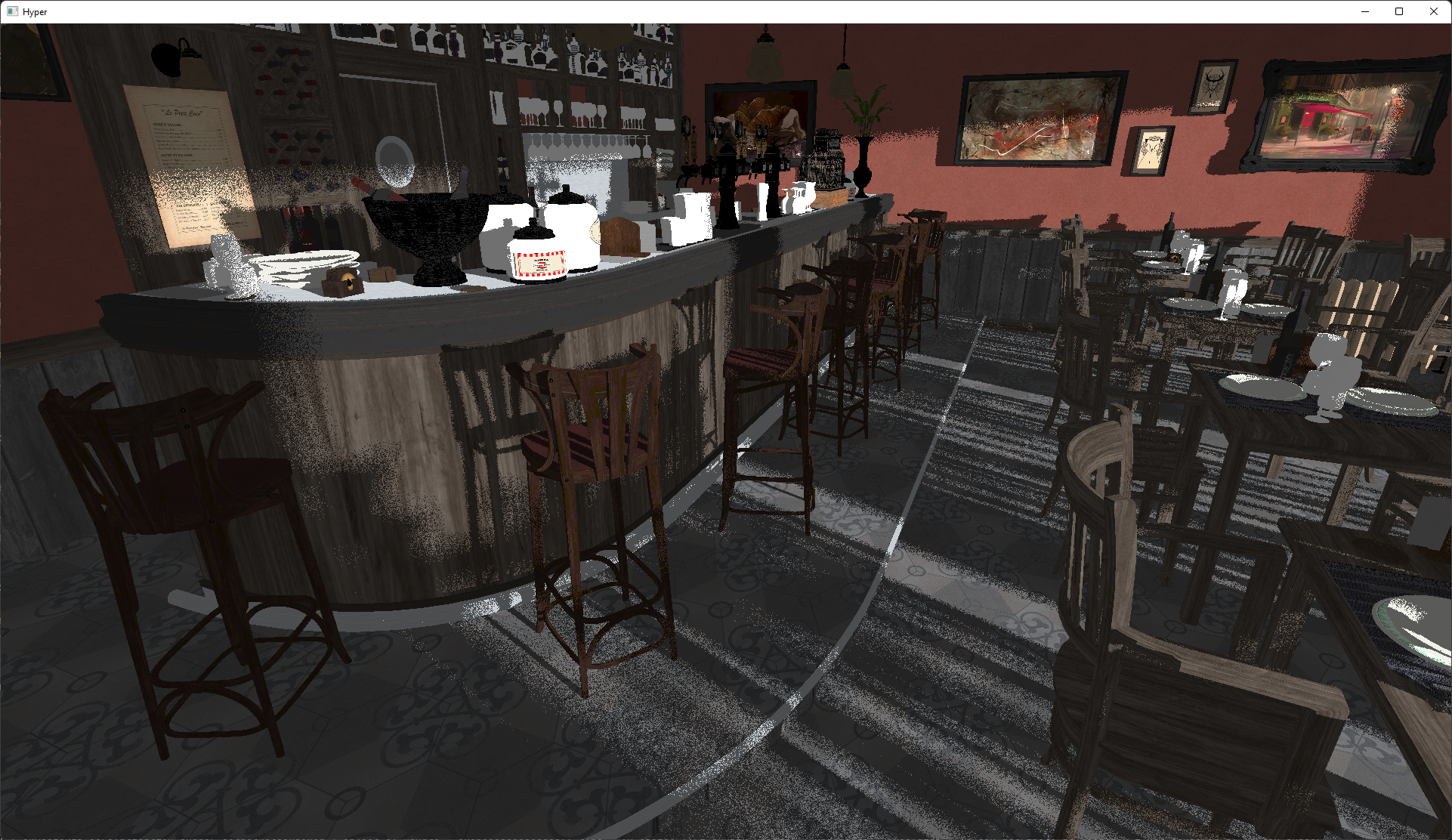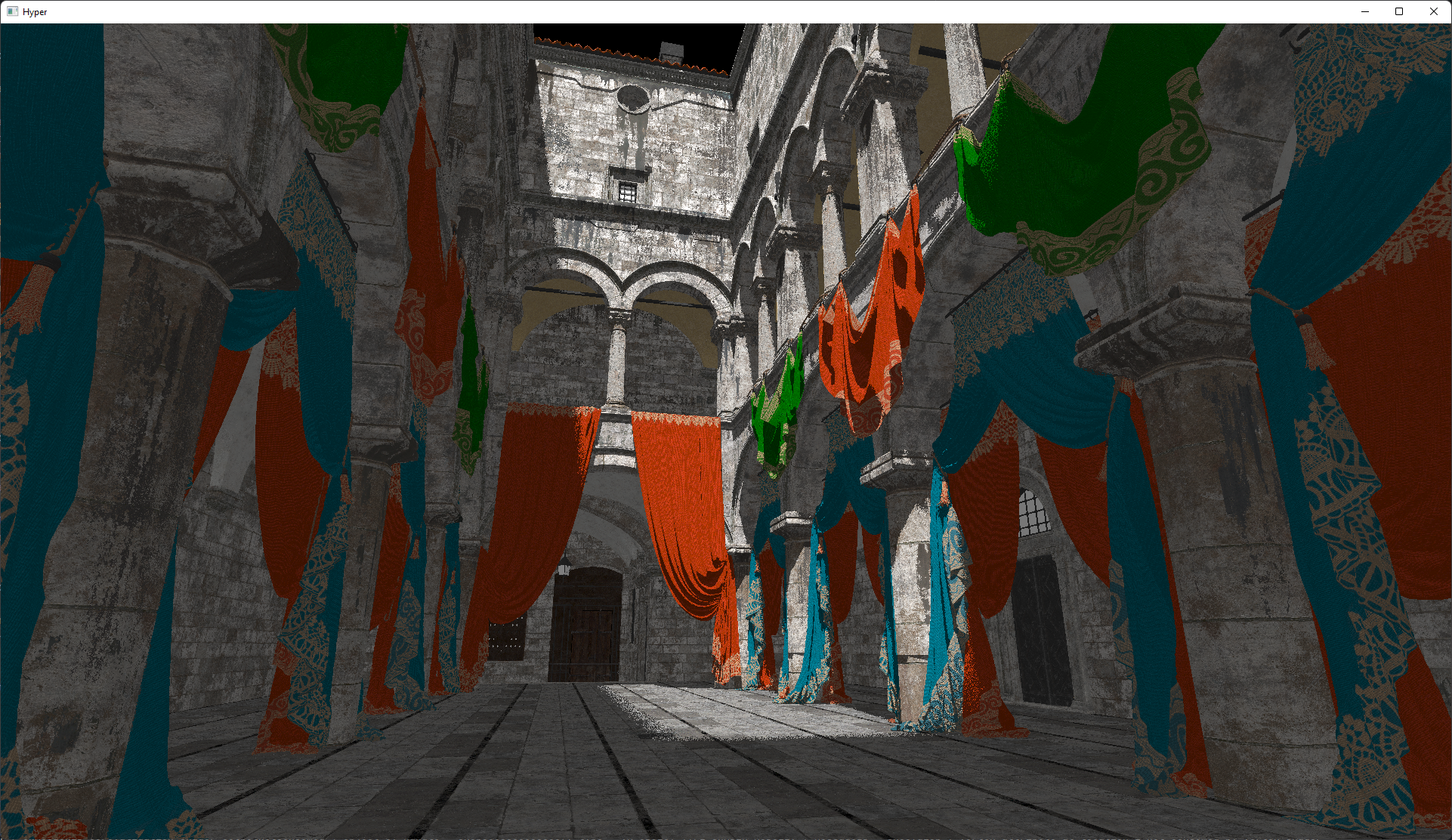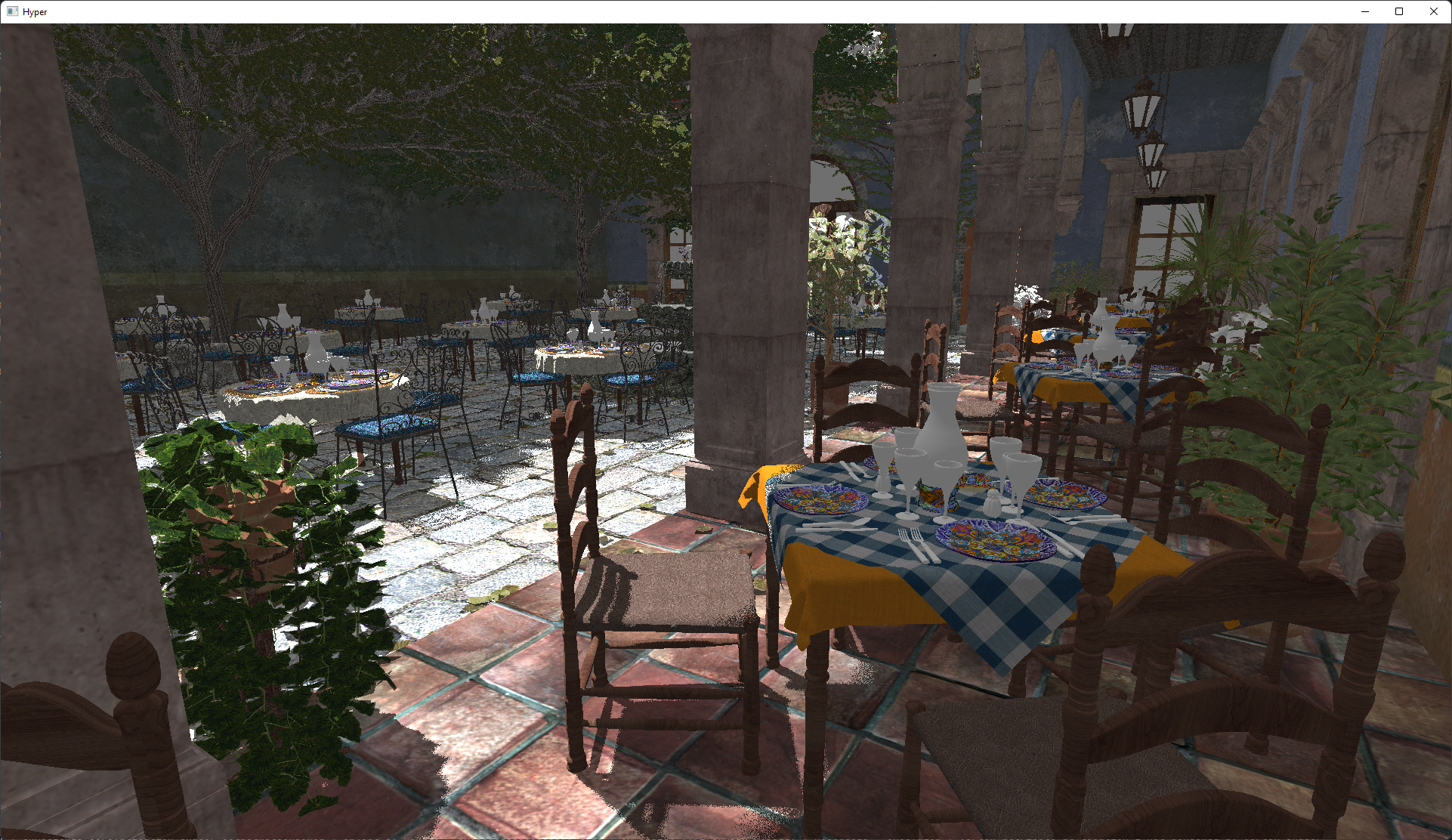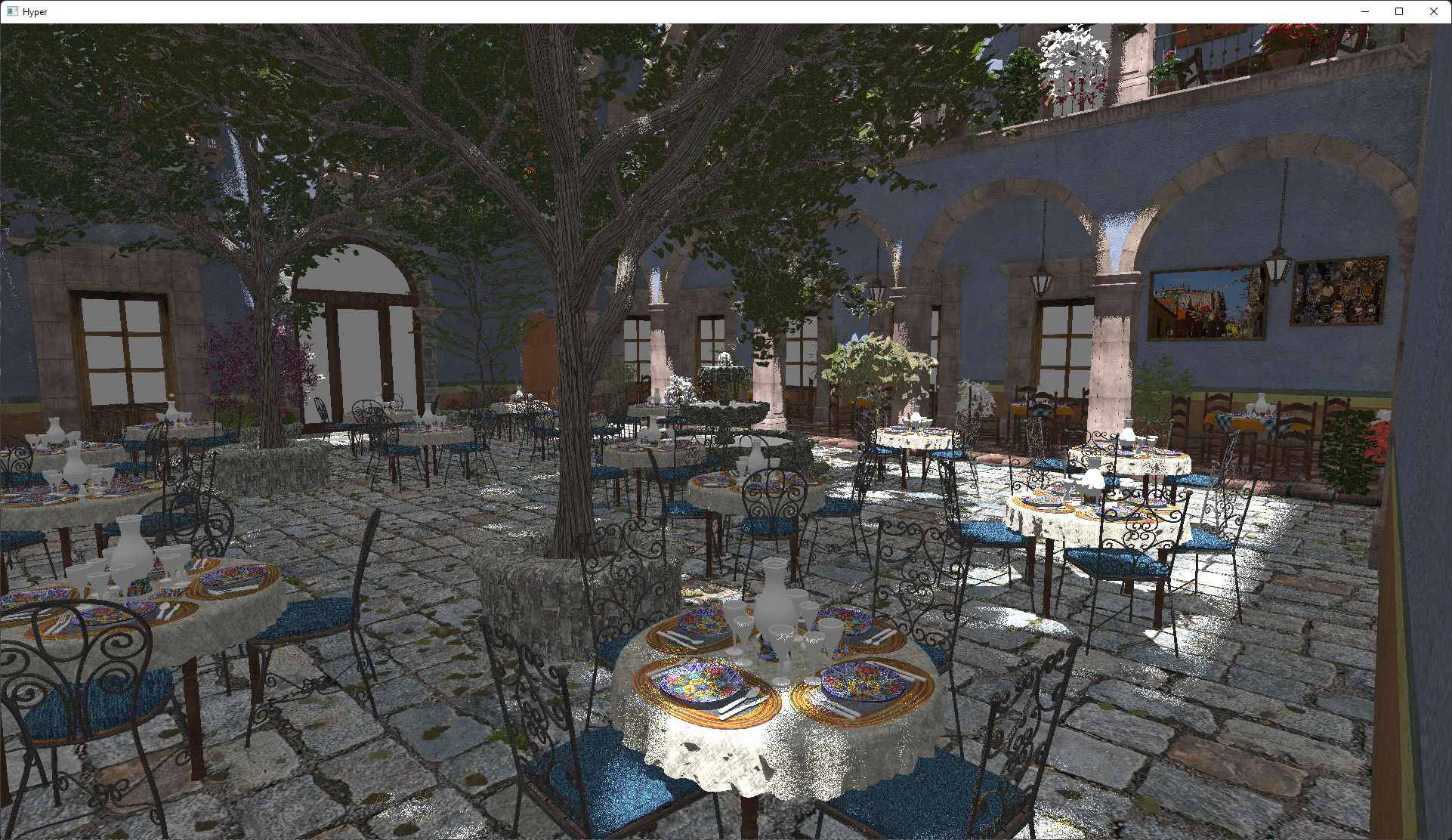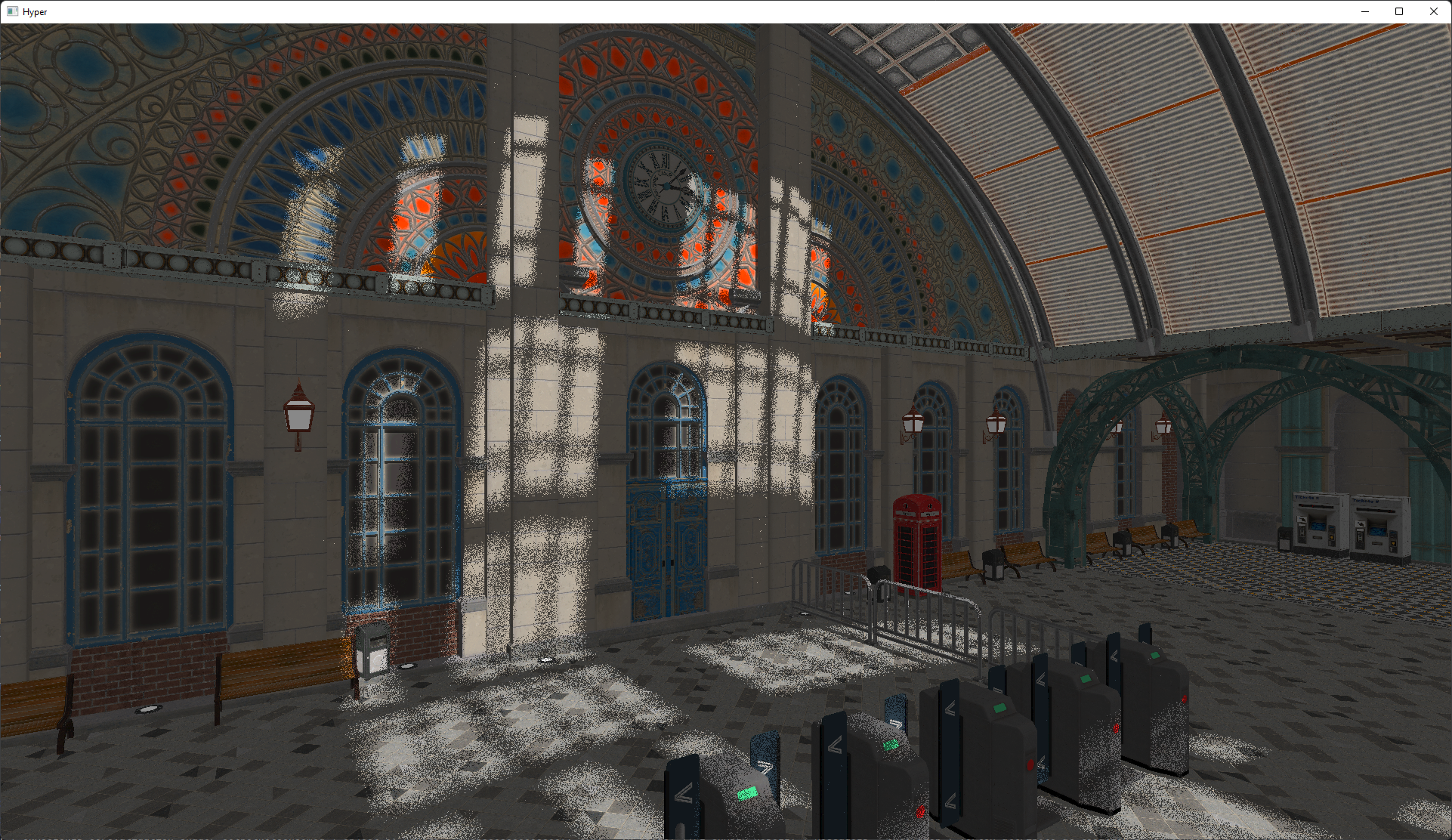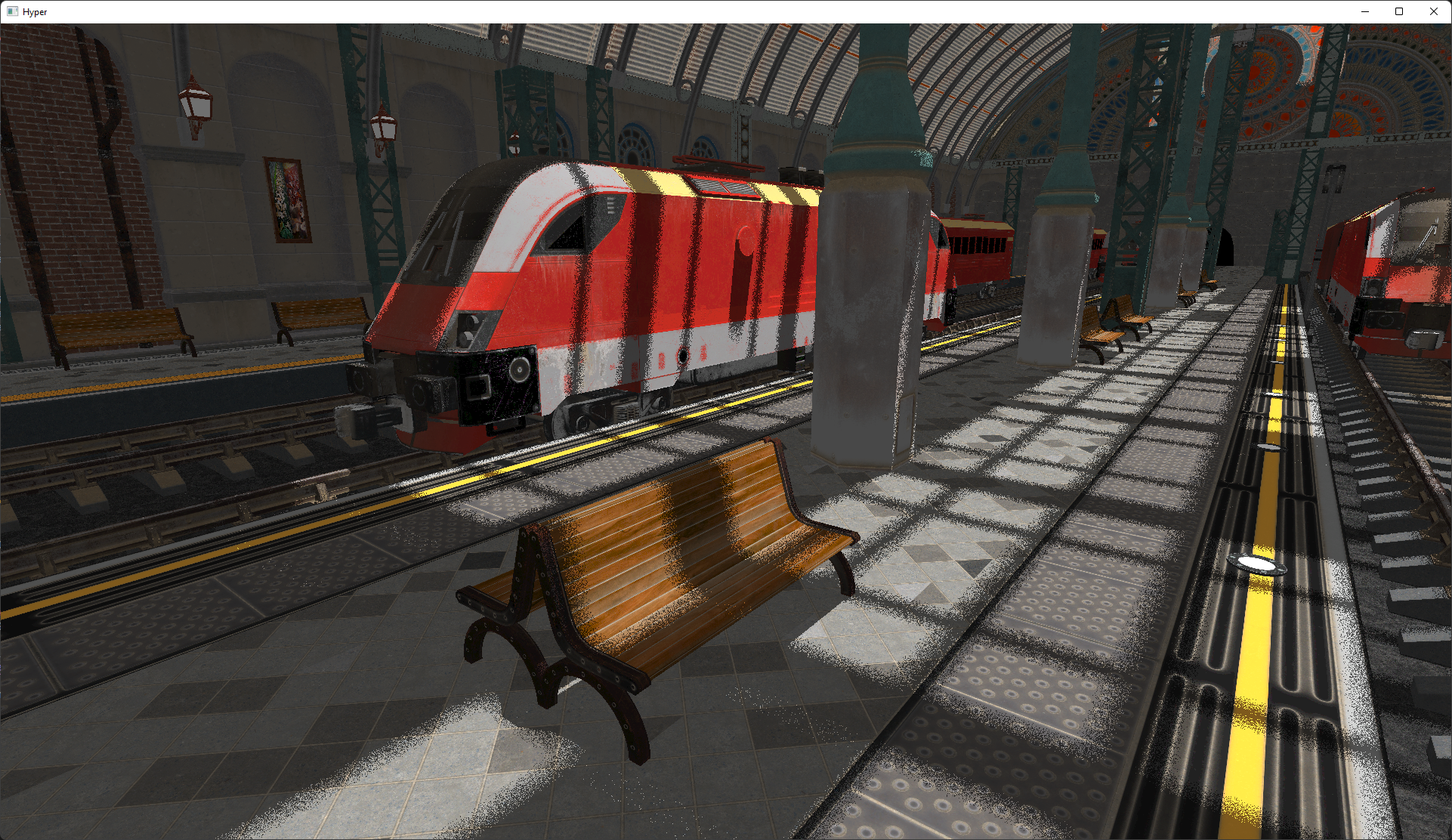Hyper
This is my hybrid ray tracer project, which I started to look into how the Vulkan Ray Tracing API works.
Because this is mostly a research project, the code is far from perfect. It is probably decent enough that a beginner might learn a thing or two, but definitely don't look at this for best-practices.
General info
Frame structure
The renderer works in three passes:
- Geometry pass
- Ray tracing pass
- Combine pass
1. Geometry pass
The geometry pass simply renders the mesh albedo and scene depth to an off-screen render target.
2. Ray tracing pass
The ray tracing pass traces 1 shadow ray per pixel, to see if that pixel should be shaded as shadow or as lit.
3. Combine pass
The combine pass takes the geometry and ray tracing outputs and combines them together to present the final image. In here, gamma correction and some simple exposure control is also applied.
After this step, the Dear ImGui ui is drawn on top of this final output.
Coordinate system
Hyper uses a right-handed z-up coordinate system, the same system that Blender's default settings use.
Loading your own models
The project out-of-the-box comes with the standard Sponza model. Luckily enough loading your own models is super easy:
- Open
Hyper/src/Hyper/Scene/Scene.cppfile, and scroll down to theScene::OnInitialize()implementation. - Change the line which imports the model from a file:
ImportModel("path/to/my/model.gltf", /* position */, /* rotation */, /* scale */);The position, rotation and scale parameters are of type glm::vec3, and default to {0, 0, 0}, {0, 0, 0} and {1, 1, 1} respectively.
Hyper uses Assimp to load models, so almost any model format should be supported.
Getting Started
Prerequisites
- Vulkan 1.3 SDK
- git LFS
- python
- a GPU that is able to run ray tracing workloads.
Setting it up
- Clone the repository recursively to get all the submodules:
git clone --recurse-submodules https://github.com/SeppahBaws/Hyper.git - Double-click the
scripts/SetupMinimal.batfile to generate the project.
The scripts/Setup.bat script features some more options:
Use VLD- this will use Visual Leak Detector to detect memory leaks (limited to Windows and Visual Studio)Use Nsight Aftermath- this will use the Nsight Aftermath SDK to handle GPU crashes (limited to systems with NVIDIA GPUs)
Screenshots
who doesn't like some fancy screenshots, right?

